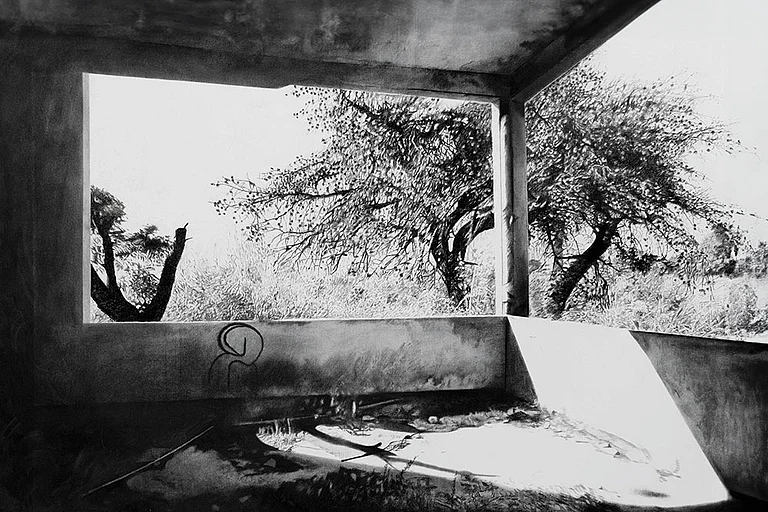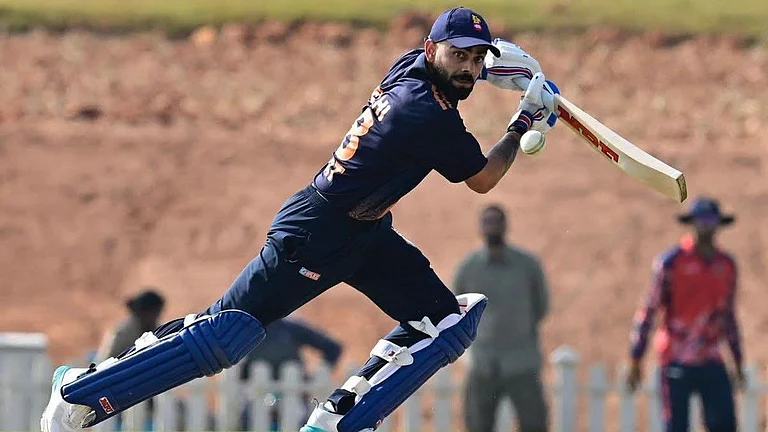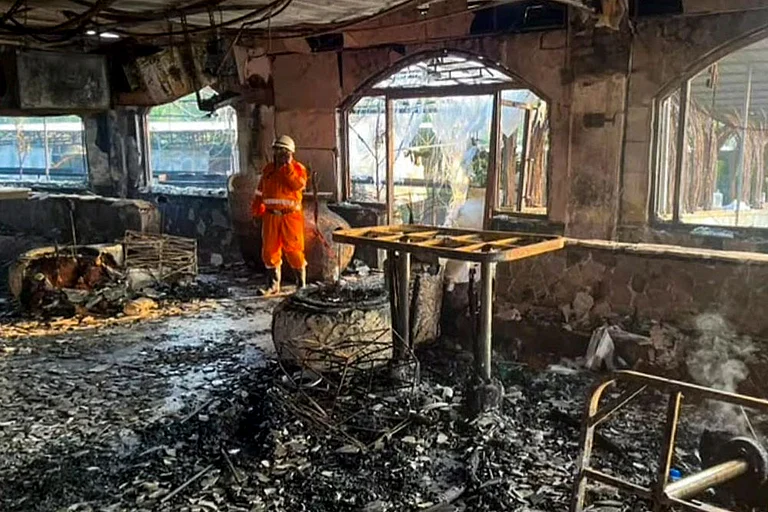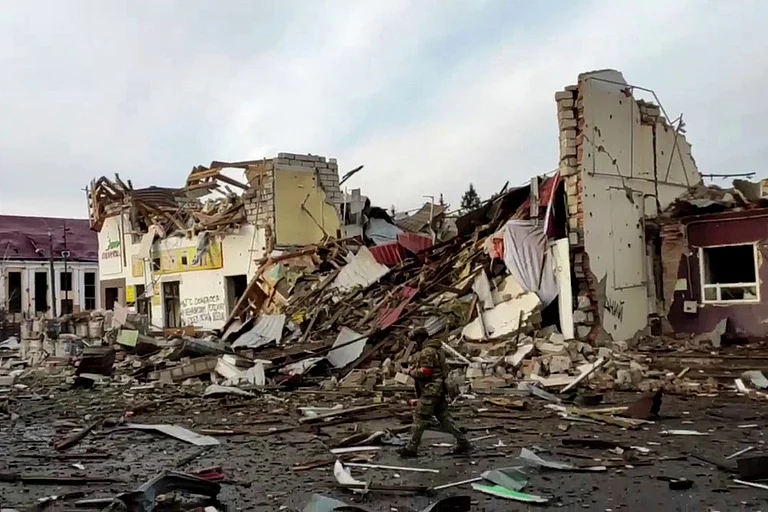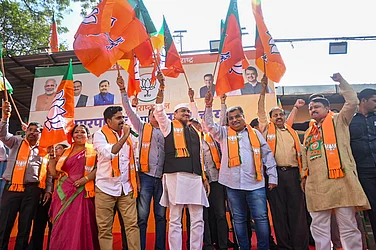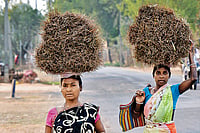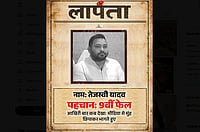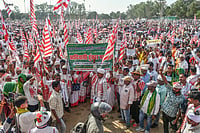Abdul Zafarullah Sadiq, 38, who has been the president of the committee of a mosque in Hazaribagh in Jharkhand for the past 15 years, is well acquainted with most of the lanes of the city. For him, it has been a matter of pride that though the mosque is situated in the ‘Nawabganj’ area of the city, the name of the mosque is ‘Indrapuri’. “This shows our diversity,” says Sadiq, adding: “However, things have changed in the recent past.”
Over the years, Hazaribagh has witnessed many incidents of violence between Hindus and Muslims. According to Sadiq, while reconciliation between the two communities after episodes of communal tension was a norm earlier, after the recent incidents, the animosity has spilled over to other aspects of day-to-day life, affecting personal equations and businesses. He is particularly upset about vandalism at the Indrapuri mosque in April during the Ram Navami procession. “At 5 AM on April 1, people participating in the procession broke open the gate of the mosque. The glass outside was broken, stones were pelted and slogans were raised. All this happened in the presence of the police,” says Sadiq. This is the first time this mosque was attacked. There is a temple right opposite to the mosque, but there was no tension ever, he adds.
In the lane next to the Indrapuri mosque, there are small shops owned by a Hindu businessman. “Nine were rented by Muslims, which have been vacated after the incident. I had never imagined something like this would happen,” says Sadiq.
On Ram Navami, clashes were reported from three districts of Jharkhand, including Hazaribagh. It is the only district in the state where the procession goes on for 72 hours. It passes through several Muslim localities, which leads to tension, say locals.
“Such clashes between the two communities are unfortunate. For years, people from all religions have participated in the procession. In fact, it was in Hazaribagh that the tradition of Ram Navami procession started way back in 1925,” says Sanjay Krishna, a senior journalist and writer.
Incidents of violence were also reported from Jamshedpur. The two communities clashed twice in 10 days. Ten kilometres away, in Haldipokhar, stones were pelted and incidents of arson were reported on April 8. Jamshedpur-based Shariq Khan says: “There have been several such small instances before, but the April 8 incident has widened the gap between the two communities. People are avoiding meeting each other or buying things from each other’s shops. Though the situation is normal now, it seems as if it will be difficult to bridge this gap.”
What happened in April was not an aberration. The state has been witnessing violence on Ram Navami for decades. In 1967, massive violence in Ranchi spilled over to other districts. According to the report of Raghubar Dayal Commission, 180 people died in the incident. The actual number could be higher than the official one, say locals. In the 1979 Jamshedpur riots during Ram Navami, 108 people lost their lives. A fact checker report of 2019 says that in the last decade, there have been 14 incidents of religious violence in the state, in which nine people have died.
While locals believe that with each communal clash, the gap between the two communities has widenened, S Ali, a Jharkhand-based expert on minority affairs says this is going to get worse as now systematic attempts are being made by politicians to create fear of Muslims among people. “We are being told for the past 20 years that Bangladeshis are illegally entering the state, marrying local tribal girls and taking possession of tribal lands. It is being said that the Muslim population is increasing and the number of tribals is going down. It’s not true. In the Santhan Pargana division, Pakur, Sahibganj, Jamtara, Godda and Deoghar districts have always had a good population of Muslims,” says Ali. He feels that political parties are eyeing Hindu and tribal votes and by weaving a narrative around intrusion of illegal Bangladeshis, they are trying to drive an anti-Muslim agenda.
In the past six months, many politicians have raised the issue of illegal Bangladeshi immigrants. During an election campaign in Deoghar on February 4, Home Minister Amit Shah said on account of illegal Bangladeshis, the population of tribals has gone down from 35 per cent to 24 per cent. On July 22, in a meeting held at Girdih, BJP national president, J P Nadda talked about the illegal entry of Bangladeshi and Rohingya Muslims in Jharkhand. Babu Lal Marandi, the state BJP president and Raghubar Das, the erstwhile chief minister of Jharkhand, have said that if they come to power, they will implement NRC in the state.
Faisal Anurag, a senior Jharkhand-based journalist, says while the intrusion of Bangladeshis in the Seemanchal regions of Bihar and Jharkhand is a sensitive issue, he is not sure how the tribals would be divided over this. “The practice of creating a narrative for votes has been happening in Jharkhand for the past 40 years. Sometimes in the name of Christians and sometimes Muslims; religious differences are being created for votes. The easiest way is to create an atmosphere of Islamophobia,” says Anurag.
In the rural areas of Jharkhand, both the tribals and the Muslims have been living together for decades and have adopted the same culture, he says. “In 1885-1886, during the Santhal revolt, both Santhalis and Muslims had participated in large numbers. Similarly, between 1980 and 1995, Manjhis and Momins were a part of Shibu Soren’s movement. Politicians are trying to break this unity. Love jihad is just an example of this,” says Anurag.
Rejecting the narrative of Islamophobia in the state, Shivpujan Pathak, media in-charge, Jharkhand BJP, says: “Intrusion of Bangladeshis in the state is a serious issue. Since the Santhal Pargana districts share their borders with Bangladesh, it is easy to enter these districts. Raising this does not amount to attack on Muslims. The presence of Bangladeshis is affecting all—tribals, Hindus or Muslims. The government should take strict measures against them instead of encouraging them.”
On the other hand, Dr Ranjit Kumar Mahli, who teaches Political Science at Nilambar Pitambar University of Palamu district, feels the tribal population has developed a sense of fear towards the Muslims.
Narrating a recent incident that took place in his hometown Lohardaga, Mahli says: “A tribal boy, aged around 16 or 17, had been delivering newspaper at our house. In 2019, he inserted a pamphlet in the newspaper in which many anti-Muslim things were written. When I questioned him he said he had distributed around 2,000 such pamphlets and thousands more were to be distributed. He stopped delivering newspapers at my place after I questioned him.”
Mahli says between 2019 and now, Lohardaga has witnessed communal clashes. Members of Vishwa Hindu Parishad, Bajrang Dal and Shri Ram Sena Samiti visited the houses of Sarna (non-Christian tribals) and locals say they have been spreading anti-Christian and Muslim sentiment. Though this has been happening for a long, however, the frequency of such visits has increased. “They make the tribals believe that the Muslims will convert their daughters through love jihad and through land jihad, they will snatch away their lands. However, most tribals don’t fall for such narratives. The number of tribals who are being radicalised is less than those who are proud to be tribals. If this feeling continues, there will be anti-islamophobia.”
(translated by Kaveri Mishra)
(This appeared in the print as 'Discordant Notes')








